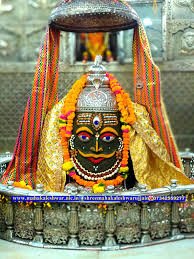
Nestled in the heart of Ujjain, Madhya Pradesh, the Mahakaleshwar Temple stands as a symbol of unwavering faith and spiritual power. Dedicated to Lord Shiva, the temple is one of the twelve Jyotirlingas, each believed to house a form of divine energy capable of liberating the soul. The Mahakaleshwar Temple is not just a place of worship, but a beacon of India’s rich religious heritage, drawing millions of pilgrims every year. This blog explores the history, significance, beliefs, and the temple’s profound impact on the community and the economy.
History of Mahakaleshwar Temple
- Ancient Origins
The Mahakaleshwar Temple is one of the oldest and most revered temples in India. It is believed to have been built in the 2nd century BCE, during the early days of the Gupta dynasty. Historical scriptures, such as the Skanda Purana, mention the temple’s divine importance. And it is widely believed that Lord Shiva manifested himself as the Mahakaleshwar Jyotirlinga. And to destroy the demon Dushan.
- Restoration and Renovation
Over the centuries, the temple has witnessed numerous invasions, which damaged its structure. However, its spiritual importance remained unshaken. During the reign of King Krishna Deva Raya in the 16th century. The temple was rebuilt, further enhancing its grandeur. Maratha rulers also restored the temple in the 18th century, ensuring that its legacy would continue.
Why People Visit Mahakaleshwar Temple
- Divine Energy and Spirituality
People visit Mahakaleshwar Temple because it is believed to be one of the most powerful centers of divine energy in India. Lord Shiva, in his form as the Mahakaleshwar Jyotirlinga. And is said to offer spiritual energy . And that can cleanse the soul. Pilgrims come from far and wide, seeking to connect with the divine and find peace.
- The Bhasma Aarti: A Unique Ritual
The temple is particularly famous for its Bhasma Aarti, a daily ritual performed early in the morning. In this sacred ceremony, bhasma (ashes) is used to decorate the idol of Mahakaleshwar, followed by the chanting of sacred hymns. Devotees believe that participating in this ritual can purify the soul and bring divine blessings. This unique practice makes the Mahakaleshwar Temple stand out among other religious sites in India, drawing thousands of visitors who seek spiritual fulfillment.
- Fulfilling Devotional Wishes
Devotees believe that visiting Mahakaleshwar Temple brings them closer to their desires. Whether it’s for good health, prosperity, or peace of mind, the temple is seen as a place where Lord Shiva listens to their prayers..
Beliefs Surrounding Mahakaleshwar Temple
- The Path to Moksha
A core belief associated with Mahakaleshwar is that visiting the temple leads to Moksha—freedom from the endless cycle of birth, death, and rebirth. Devotees come to the temple with the hope of attaining liberation, shedding their sins, and attaining a state of spiritual purity. This belief reinforces the temple’s significance as not only a place of worship but also as a gateway to salvation.
- Protection from Evil Forces
Another widely held belief is that Mahakaleshwar offers protection from harm and evil forces. Devotees believe that Lord Shiva, in his powerful form as Mahakaleshwar, shields them from misfortune, negativity, and adversity.
- Self-Manifested Jyotirlinga
The Mahakaleshwar Jyotirlinga is considered self-manifested, which makes it unique among the twelve Jyotirlingas. This means that unlike other Jyotirlingas that were installed by human hands, Mahakaleshwar is believed to have appeared naturally. This belief strengthens the temple’s sacred status and attracts even more devotees who believe in the deity’s supreme power.
Funds and Economic Impact
- Revenue Generation
The Mahakaleshwar Temple generates significant funds through donations, offerings, and the participation of devotees in special rituals like the Bhasma Aarti. The revenue is used to maintain the temple’s infrastructure, ensuring its preservation and smooth functioning. The funds are also directed towards the upkeep of the temple’s aesthetic appeal. And making sure it remains a divine place for pilgrims.
- Role of Mahakaleshwar Temple Trust
The Mahakaleshwar Temple Trust plays an integral role in managing the funds generated by the temple. The Trust is responsible for overseeing the maintenance, renovation, and various welfare programs associated with the temple. Efficient management of these funds ensures that the temple continues to serve the spiritual and material needs of the community.
- Impact on Local Economy
Mahakaleshwar Temple’s economic impact extends beyond its gates. As one of India’s major pilgrimage sites, it attracts millions of visitors every year. The influx of pilgrims helps sustain the local economy, boosting sectors like hospitality, tourism, transportation, and retail. Local artisans also benefit from the temple’s popularity, as many of them sell religious items, souvenirs, and handicrafts to the visiting pilgrims.
- Social Welfare Initiatives
The funds generated by the temple are not limited to infrastructure maintenance. They also support various social welfare programs aimed at improving the lives of the people in Ujjain. This includes funding education, healthcare, and community development programs that uplift the local population, making Mahakaleshwar Temple an important center for social good.
Importance of Mahakaleshwar Temple
- Cultural Significance
Mahakaleshwar Temple is not just a religious site; it is a crucial part of India’s cultural heritage. The architecture of the temple, with its grand Shikhara (spire), intricate carvings, and stunning sculptures, showcases the brilliance of ancient Indian design. The temple is an architectural marvel and a testament to the artistic ingenuity of past generations.
- Spiritual Center of Ujjain
Ujjain is one of the seven holiest cities in Hinduism, and Mahakaleshwar Temple serves as the spiritual heartbeat of the city. Along with other temples in the region, Mahakaleshwar attracts devotees who wish to immerse themselves in the spiritual traditions of India. The temple serves as a gateway to higher spirituality. And offering pilgrims a space for reflection, meditation, and worship.
- A Symbol of India’s Religious Identity
As one of the twelve Jyotirlingas, the Mahakaleshwar Temple holds immense religious significance for Hindus. It is a place where devotion, history, and spirituality converge, offering an unmatched experience for those seeking connection with the divine. For many, the temple serves as a symbol of India’s religious identity, representing the strength of Hinduism and the enduring power of Lord Shiva.
Conclusion
The Mahakaleshwar Temple is more than just a place of worship. It is a hub of divine energy, a center of spiritual awakening, and a cultural treasure that continues to attract millions of pilgrims from all corners of the globe. With its rich history, powerful beliefs, and significant impact on the local community, Mahakaleshwar Temple is a timeless symbol of faith and devotion. As it continues to inspire spiritual journeys, it remains an essential part of India’s vibrant religious and cultural landscape, offering blessings, protection, and hope to all who visit.





